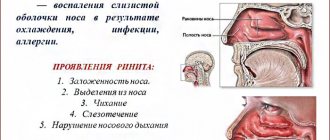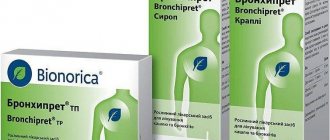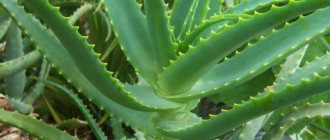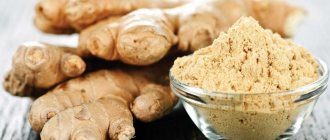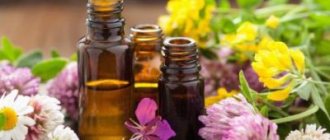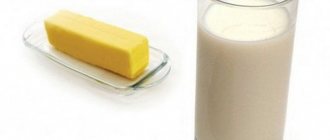How children's throats are treated with folk remedies.
Gargling, drinking plenty of fluids, and applying a compress are simple methods for improving the well-being of a patient with a sore throat. Treatment of the throat with folk remedies in children is carried out from the moment symptoms appear to eliminate discomfort. Warm drinks eliminate dryness, irritation and pain in the oropharynx. Other procedures and remedies from the arsenal of traditional medicine will help consolidate the effect.
Useful tips for parents of a sick child
Parents try not to use medications from the pharmacy to treat minor ailments in children. Many drugs have age restrictions, side effects and contraindications. Folk remedies for sore throats for children and adults have been used for centuries. Long-term practice of using various products and plants suggests that such treatment helps in the initial stage of the disease and serves as a complement to drug therapy.
- Give honey for absorption in the mouth to a child over 12 months old (1 tsp in the evening). The product coats the mucous membranes of the oropharynx, soothes irritation and ensures better quality of sleep.
- Do not dissolve honey in boiling water, hot tea or milk. At temperatures above 40°C, the amber product loses most of its biologically active substances.
- Boil food until soft and puree. Salt moderately, do not use spices.
- Juices from oranges and grapefruits irritate inflamed tissues and are therefore undesirable in the diet of a sick baby.
- Candies or lozenges containing honey, herbal extracts, pectin can be given to a child over 3 years old.
- Mustard plasters, steam inhalation, compresses for sore throats and other warming procedures are allowed when the child’s temperature is less than 37°C.
- Use a humidifier at low relative air humidity (below 30–50%). You can replace the operation of the device by hanging wet towels.
- Foot baths are very useful for colds and acute respiratory viral infections to prevent complications. Add mustard powder and herbal infusion to the water.
If a sore throat does not go away after two or three days of doing home treatments, parents should consult a pediatrician. A visit to the doctor should not be postponed if purulent deposits form in the throat or rash on the body. See a doctor if pain increases, high temperature, difficulty breathing, vomiting.
Natural antiseptics: how to protect yourself from germs using natural remedies
Autumn is a period of spread of various infections that have to be fought. In this regard, it’s time to remember about plants that have antimicrobial properties. Their valuable qualities have long been proven and are actively used by manufacturers of both medicines and hygiene products.
Eucalyptus.
Eucalyptus leaves contain essential eucalyptus oil, and when dried, the oil content practically does not decrease. The main component of the essential oil (up to 80%) is the terpene compound cineole, which has antiseptic properties. The most famous drug based on eucalyptus is chlorophyllipt (eucalyptus leaf extract), which is prescribed for a wide range of infectious and inflammatory diseases of various localizations. To gargle, you can use decoctions of dry raw materials.
Thyme (thyme).
A valuable component of this plant is thymol, which is obtained by extracting thyme leaves. Thymol is a phenolic derivative of terpenes and is capable of denaturing microbial cells of various groups. This is due to the high antiseptic effect of the plant. In official medicine, thyme is used for the production of a number of drugs: thymol, pertussin, and is also sold in the form of extract and dry raw materials.
And recently a natural hand sanitizer appeared on the market - a sanitizer with thymol. Alexander Galkin, production manager (NL International):
– Thymol is extracted from thyme leaves, and it is a long-known organic substance with antibacterial properties and a pleasant, specific spicy aroma, a natural antibiotic.
Unlike alcohol-based antiseptics, which are effective against germs but have a negative effect on the skin, damaging it, natural antiseptics act “gently” and organically. At the same time, according to luminometer measurements, the number of microbes on the surface after treatment with a thymol-based antiseptic is reduced several times, to safe values.
Calendula (marigold).
Flowers are used in pharmacology - they contain a large amount of coumarins, which have antifungal and bacteriostatic effects, as well as tannins, which have bactericidal properties. In pharmacies you can find calendula tincture, dry raw materials, and this plant is also included in many medicinal and cosmetic products. In addition, calendula essence is used in perfumery.
Sage.
This plant is also among the leading plants in the content of phytoncides (from the Greek phytón - plant and Latin caedo - I kill) - biologically active substances formed by plants that kill or suppress the growth and development of bacteria.
Preparations based on sage are widely used in medicine and are available in the form of tablets, tinctures, and dry plant materials for preparing decoctions and infusions.
Tea tree.
In addition to cineole, this plant contains monoterpenes - substances with a pronounced antimicrobial effect. In pharmacies you can see tea tree oil, which is used only externally, or for inhalations, massages, baths, according to the doctor’s recommendations.
Warm drink is a universal remedy for sore throat
Infusions and decoctions of herbs help against inflammation and pain due to ARVI, pharyngitis, and sore throat. Prepare folk remedies for throats for children based on plants from 1 tsp. dried plant material and 250 ml of boiling water. Leave for 5–15 minutes, filter through a strainer. A filter bag with herbs from a pharmacy is simply brewed with boiling water. Give the child a warm drink with a small amount of sugar or honey, use it as a solution for gargling.
List of plants for treating children's throats at home:
- Chamomile has anti-inflammatory properties, protects against microbes and promotes mucosal regeneration.
- Salvia officinalis is considered one of the best plants for treating pain and reducing inflammation of the oropharyngeal mucosa.
- Fennel or sweet dill has anti-inflammatory and expectorant effects.
- Peppermint has a disinfecting and refreshing effect. Essential oil components protect the throat from pathogens. Drink mint tea for colds.
- Plantain and coltsfoot leaves are used individually and in collections for the treatment of tonsillitis.
Onions are an indispensable remedy for infectious diseases of the upper respiratory tract. A child can suck onion juice infused with honey. Or they give 1 tbsp. l. onion juice in the morning and evening, use the same gargle (previously diluted with water).
A warm vodka compress on the throat of children can do more harm than good. The product is not recommended for use at elevated temperatures; in addition, alcohol-containing liquids have an aggressive effect on the baby’s skin and penetrate into the bloodstream. Instead of an alcohol compress, it is better to do a dry wrap with hot salt and sand.
How to make a compress on a child’s throat:
- A cloth napkin is moistened with water, wrung out and applied to the front of the neck. A scarf or scarf is tied on top.
- Polyethylene is not recommended for use.
- After applying the compress, the child should be put to bed and covered.
- The wet cloth should be re-moistened and applied every two hours.
Curd compress on a child’s throat:
- Heat the cottage cheese and apply it to a thick cloth napkin.
- If you are not allergic to bee products, mix the curd mass with 1 tsp. honey
- Apply the compress to your neck and secure with a scarf.
- Remove after 1 hour.
A dry compress is used to treat a sore throat. First, heat table salt in the oven or on the stove and pour it into a fabric bag (a clean sock made of thick knitwear). Tie and place in another sock. Do not use the remedy for purulent sore throat. Salt can be replaced with sea or river sand, which must be sifted and washed with water.
Natural antiseptics.
Almost all medicinal plants have several healing properties at once - this is their advantage over chemicals. There are a lot of herbs that have an antiseptic, that is, antibacterial, cleansing effect.
If herbs and flowers are used, an infusion is prepared from it - the medicinal raw material is poured with hot boiling water and infused for 30 minutes to 2 hours.
The roots, rhizomes and bark are used to prepare decoctions. They are filled with cold water and boiled in a water bath for 30 minutes.
Alcohol tinctures for washing, rinsing and irrigating the mucous membranes of the nose and throat, as well as ears, are not recommended - they can cause burns. In extreme cases, they can be diluted with water.
Marshmallow (root) - the antiseptic effect of marshmallow is not as strong as that of other plants, but it contains a lot of mucus, so it is good for them to treat the mucous membranes of the nose and throat if they are extremely dry. Marshmallow also relieves coughs and relieves irritation.
It is not necessary to prepare a decoction of marshmallow roots - 2 tsp is enough. pour the crushed raw material into a glass of warm water and let it brew for half an hour, stirring occasionally.
Oak (bark) - a decoction of oak bark, on the contrary, is used in cases where the mucous membrane needs to be dried and a lot of pus is released. Oak relieves inflammation well and disinfects mucous membranes. 1 tbsp. l. Boil the bark in a glass of water for 20 minutes.
Willow (bark). Willow bark contains salicylic acid and tannins. Before the invention of aspirin, decoctions of willow bark were the main anti-inflammatory and antiseptic agent in medicine. Willow bark tea can be drunk as an antipyretic.
St. John's wort (herb). If you need to be careful with this plant for internal use (in large quantities it has a toxic effect), then there are no contraindications for rinsing and washing the nasopharynx and ears. St. John's wort also has a wound-healing effect and relieves inflammation well.
Calendula (flowers). To prepare the infusion, 2 tsp. flowers are poured with a glass of boiling water in a thermos and left for 2 hours (you can cook in a water bath for 10-15 minutes). Calendula, in addition to antiseptic, has a wound-healing and anti-inflammatory effect, it is not toxic, so if you swallow the infusion while rinsing, nothing bad will happen. Calendula tincture can be used to treat the skin around ear boils.
Lemon. Lemon juice is used to disinfect kitchen utensils, which prevents the growth of bacteria. Lemon juice quenches thirst well during fever, and even prevents the formation of blood clots. Lemons are especially effective in fighting bacterial chest infections and thrush.
Onion is a multifaceted antiseptic. This natural antibiotic is merciless against streptococci, diphtheria, tuberculosis and dysentery bacillus. Eating fresh onions increases your chances of not getting colds. Its sulfur components cause tears, but they are the ones that have antimicrobial properties.
A poultice of raw grated onions helps with minor cuts, burns and scalds; chopped raw onion helps with sore throat, cough and bronchitis.
Juniper. Juniper berries contain a large amount of volatile oils, and therefore they are a powerful antiseptic for the urinary system. Should be taken as a tincture or decoction.
Plantain (leaves) is one of the most popular medicinal plants. If you don’t have iodine or peroxide on hand at your dacha, you can always apply plantain leaves to the wound. To treat diseases of the ear and nose, fresh juice is used, which can be instilled without harm. An infusion of leaves (1 tablespoon per 0.5 cup of boiling water, leave for 1 hour) is used for gargling and rinsing the nasal cavity.
Turnip is healing for both respiratory and stomach infections. You can eat it raw or drink turnip juice. A poultice made from grated turnips heals minor wounds and skin scrapes.
Turnip is a good preventative against tuberculosis and leprosy, and boiled turnip helps strengthen the immune system. Turnip decoction is used to treat sore throats and toothache.
Chamomile (flowers) is the undisputed leader in the list of natural antiseptics. Chamomile tea helps with intestinal infections, and many skin diseases are treated with its infusion. Rinsing with chamomile infusion is an excellent way to combat sore throats and even a runny nose. - Licorice (root) - like marshmallow, licorice is used to treat the mucous membrane in cases where it is too dry. Licorice forms a protective film while fighting germs. For laryngitis, a decoction of licorice roots relieves cough and sputum discharge. To prepare the decoction 1 tbsp. l. Boil the roots in a glass of water for 15 minutes in a water bath.
Yarrow (herb) - this plant is rich in tannins, flavonoids and essential oils, one of which - azulene - makes it an excellent disinfectant and anti-inflammatory agent. For infectious diseases, you can use yarrow infusion not only for rinsing, but also as tea - this helps to quickly cope with the infection.
Thyme or thyme (herb) - it is better to use its essential oil. For rinsing, it is diluted in warm water, and for treating the nasal cavity and ear, you can apply it using cotton swabs. You can also use an infusion (1 tbsp per glass of water).
Infuse thyme leaves to create an antimicrobial tea that fights coughs and colds. It is also effective for gastroenteritis and other digestive infections. The essential oil contains thymol, which is useful as a mouth rinse for gum inflammation.
Sage (leaves) - advice to gargle and rinse your nose with sage infusion is found in all recommendations. It has very strong antimicrobial properties, so it is indispensable for sore throats and sinusitis.
Garlic – The antimicrobial active ingredients in garlic can fight bacterial and viral infections. To disinfect an abscess, you can apply garlic juice to it, and when taken orally, entering the bloodstream, it disinfects the entire body.
Garlic is highly effective for diseases of the upper respiratory tract, whooping cough, pneumonia, and bladder. Improves overall metabolism - all vessels in the body, especially blood vessels, become elastic; prevents hypertension, myocardial infarction, angina pectoris, sclerosis, and the formation of various tumors. Relieves headaches, tinnitus.
Steam inhalations
Hot vapors help moisturize and improve blood circulation in the mucous membrane of the throat. Children should always be supervised by their parents during steam inhalation. Too hot water can cause burns to the skin and mucous membranes!
How to treat a throat with steam inhalation:
- You need to warm the water and add table salt or soda.
- Pour the solution into a bowl having a diameter of 15–25 cm.
- It is better to use a decoction of herbs: chamomile, sage, mint, calendula.
- Your head should be bowed over the bowl and covered with a towel.
- The steam should be inhaled through the mouth and nose.
The youngest children are not given steam inhalation. If the baby has a red throat, then you can place a pan with a boiled decoction of chamomile or sage in the bathroom. The child needs to be picked up and allowed to breathe the steam. Or pour a warm infusion into the bath and immerse the baby up to the chin.
Gargling for sore throat
If possible, gargle every hour. The procedure helps to moisturize the mucous membrane, washes away germs and harmful substances. Herbal infusions and solutions should be warm, without foreign impurities.
Gargles for sore throat in children:
- warm boiled water with the addition of a few drops of peppermint oil;
- warm water 200 ml with 1 tsp. calendula tinctures;
- a solution of table salt and baking soda;
- solution of sea buckthorn oil in water;
- infusion of chamomile or sage.
Causes of sore throat
Sore throat is an infectious disease that occurs due to infection on the surface of the peripharyngeal lymph nodes.
Lymph nodes act as the body’s natural defense against the introduction of pathogens, so they take on the full brunt of the damage.
Most often, in 90% of cases, sore throat is caused by staphylococcus. The bacterium quickly penetrates the bloodstream and causes general sensitization. In other words, the entire body is tuned to fight the invader and releases millions of antibodies into the blood.
Note!
If a sore throat is not treated correctly, that is, without antibiotics, then damage to the heart and joints may be a complication. It is worth noting that traditional methods can strengthen local immunity and reduce pain and inflammation.
Pharyngitis is an inflammation of the pharyngeal mucosa. Maybe as an independent disease, but more often than not, this is the debut of almost all viral infections that are transmitted by airborne droplets. These include influenza, rhinovirus, measles, chickenpox and much more. Some diseases are treated only symptomatically, so folk remedies come in handy.
Lymphadenopathy is a disease of the oral cavity and lymph nodes. With carious teeth or during active tooth growth, inflammation occurs in the oral cavity. In this case, the submandibular lymph nodes react to the resulting inflammation. A person feels pain and discomfort in the throat area.
Thermal and chemical burns are injuries caused by chemicals or poisons. Of course, this damage to the mucous membrane cannot be confused with anything, the person himself knows what he drank and why his throat hurts, but we are talking about long-term consequences when the healing process is underway.
Other diseases - there are a number of diseases, all of them mainly infectious, the first signs of which are a sore throat. Among them there are even particularly dangerous infections that lead to death. But, as a rule, there are other signs that cannot be confused with these diseases.
Symptoms of sore throat
- Chills, general weakness;
- pain when swallowing;
- unpleasant sore throat;
- severe painful sensation in the throat;
- stuffy or runny nose;
- sometimes with a sore throat there is a cough;
- hoarseness or loss of voice.
Homeopathic treatment
Take products based on poisonous plants, barium, mercury and other minerals only as prescribed by a homeopathic doctor. The specialist determines which drug a particular person needs.
Homeopathy is incompatible with some products and food components. For example, with black tea, chocolate, Pepsi-Cola. In addition, during treatment you should avoid taking products with mint. This group includes not only drinks, but also toothpastes with menthol and mints. It is believed that they neutralize the effect of homeopathic medicines.
Treatment of throat in children with folk remedies.
It hurts to swallow. Every mother has heard this phrase more than once. Children suffer from sore throat and pharyngitis much more often than adults. This is due to weak local immunity. The infection enters the body through the nose and throat, causing local inflammation. Treatment of the throat in young patients differs from treatment in adults. Along with medications, you can also use folk remedies for sore throat.
Traditional medicine
- Onions will also help treat your throat. To prepare the folk remedy, chop the onion and collect it in a gauze bag. Then give the bag so that the baby can inhale the phytoncides. The global, antiseptic effect of onions will weaken the infection.
- Traditional treatment of throat in children can be carried out using bags of salt. Place the bags in the place of the tonsils. Until the salt cools, keep them in one place. Then remove and wrap with a scarf.
- Honey, which has anti-inflammatory and antibacterial properties, is often used by opera singers to soothe their throats before performing. The child may lick honey from the spoon to feel how it soothes the throat.
- Foot baths are also useful for sore throats. For treatment, you need to fill a bowl of hot water and dissolve 1-2 tablespoons of dry mustard in it. Keep the baby's feet in this water for about 10-15 minutes. Then they wipe their feet dry, put on warm socks and send them to bed. This procedure is best done at night.
- It is recommended to wear a woolen hat on your head. This will warm the head, protect the ears from the spread of infection as they cool, and help organize blood flow to the head, and therefore the throat.
What are the features of treating throat in children?
Children, oddly enough, are somewhat easier to tolerate sore throat than adults. But herein lies the danger. Parents may decide that the disease is not dangerous and take treatment lightly. Under no circumstances should you do this! Sore throat can cause severe complications such as heart disease or arthritis. Also, tonsillitis in weakened children easily turns into purulent inflammation of the tonsils.
Pharyngitis is also dangerous. Incorrect or delayed treatment often results in complications such as tracheitis or bronchitis.
What is the difference between treating a sore throat for children and treating an adult? Compresses are prohibited for children under three years of age. Do not use alcohol for a compress. Home treatment involves gargling with herbs and maintaining good hygiene. Everything else is prescribed by the doctor.
Rules for the use of folk remedies
Home treatment can be used as a supplement to the main one. Before using it, you should consult your doctor and he will tell you which herbs or herbal mixtures for gargling will be most effective for a particular disease.
This treatment has virtually no contraindications. Do not use herbs only in case of individual intolerance. Unlike medications, herbal decoctions and infusions can be used indefinitely.
Types of medicinal herbs
Medicinal plants are used quite widely in the treatment of various diseases. Accordingly, they have different therapeutic effects.
The herbal gargle should have the following effects:
- reduce the inflammatory process;
- relieve pain;
- eliminate swelling of the mucous membrane;
- soothe an irritated throat.
Many medicinal plants have such properties.
Table. Types of medicinal herbs used to treat throat:
You can use either one plant or a mixture of herbs for gargling. This treatment is very popular because the price of medications at the pharmacy can be very high. And herbs are relatively inexpensive; many people prepare medicinal raw materials on their own.
Cooking methods
All herbal remedies are easy to prepare with your own hands. This does not require any special ingredients and preparation takes little time. Below are instructions for preparing herbal remedies in different situations.
What herbs should you gargle with if you are more concerned about pain? In this case, juice from aloe leaves is suitable. It's easy to prepare.
To do this, you will need several aloe leaves, which need to be washed thoroughly. After that, grate them or chop them with a mixer. Then squeeze the juice out of the resulting pulp.
Before use, it must be diluted with warm water. Now you can gargle with this remedy 2-3 times a day.
What herb should you gargle if you feel a lump and have difficulty swallowing? Such symptoms mean that the inflamed mucous membrane has become swollen and plaque has appeared on it.
To get rid of this feeling, you can prepare a decoction of oak bark. Dry raw materials are poured with boiling water and cooked for 15 minutes in a water bath. After this, let it stand until it cools completely and filter. Gargle with the decoction 3-4 times a day.
Symptoms of inflammation are quickly eliminated by chamomile and sage. Plant raw materials are poured with boiling water and infused for half an hour. Warm infusion can be used to rinse 3-4 times a day.
To soften the mucous membrane, a decoction of St. John's wort flowers is useful. Dried flowers are cooked in a water bath for 15-20 minutes. Then cool and filter. The resulting broth is used for rinsing several times a day.
For any inflammatory diseases, herbs can be used for gargling, either singly or in different combinations. This procedure has not only the healing effects of medicinal plants. The intense movement of fluid in the throat helps clear the mucous membrane of plaque and soothe an irritated throat.
Herbs for gargling are a great way to speed up recovery and significantly relieve unpleasant symptoms of inflammatory processes.
Doctors recommend using herbs for gargling in the form of decoctions and tinctures for colds and inflammatory processes. It is important to consider a possible allergic reaction due to individual intolerance to medicinal herbs. To speed up the healing process, you need to drink throat lozenges, gargle with natural plant-based decoctions, and use a spray for phlegm and swelling.
How to distinguish a sore throat from pharyngitis
The clinical picture of pharyngitis and tonsillitis is largely similar. Only a doctor can say exactly what the baby has. Sore throat is usually caused by bacteria such as staphylococcus or streptococcus. Candida fungi and viruses that cause stomatitis can also be the cause. However, you need to understand that this type of sore throat does not occur immediately. Stomatitis and candidiasis first develop in the mouth, and then, if left untreated, they spread to the throat.
Symptoms of acute tonsillitis are:
- temperature, often high;
- severe pain in the throat, not necessarily when swallowing;
- weakness;
- enlarged lymph nodes under the jaw and on the neck.
Some types of sore throat do not give a pronounced clinical picture. The child may simply complain of slight pain, but still be active. Therefore, the mother should examine the baby’s throat. Sore throat is manifested by hyperemia of the tonsils, they acquire a characteristic, as if loosened, appearance. Sometimes plaque appears on them in the form of dots or veins. In this case, you should immediately call a doctor.
Pharyngitis also produces symptoms such as fever and weakness. The main difference is that with pharyngitis the child coughs, and tonsillitis, as a rule, occurs without coughing. The patient’s throat, back and side of the pharynx also become very red. Almost always, pharyngitis occurs either simultaneously with rhinitis, or 1-2 days after the onset of a runny nose. With pharyngitis, the throat hurts only when swallowing.
Possible complications
If diseases are not treated on time, serious consequences in the form of complications are possible. This also applies to a sore throat, because painful sensations are not only caused by a common cold. Inflammation of the throat mucosa is caused by bacteria such as staphylococcus, streptococcus, scarlet fever and others. Even a sore throat can lead to an extremely difficult throat abscess.
Be sure to consult a doctor if you have any of the following symptoms:
- increased body temperature;
- difficulty breathing and eating;
- vomiting and nausea;
- plaque on the tonsils;
- headache;
- skin rashes;
- stuffy ears;
- enlarged lymph nodes.
Constantly monitor your body and strengthen it , because this is the best way not to get sick. Increase your immunity in any way: harden yourself, lead a healthy lifestyle, spend a lot of time in the fresh air, eat healthy food and take vitamins.
Our environment greatly influences our health. Much depends even on the air. Polluted and dry air often provokes diseases of the respiratory tract and throat. Also, the conditions where you work have a fairly strong impact on your health.
Child mode for sore throat
So, treatment for a child’s sore throat is prescribed by a pediatrician or ENT specialist. Parents should always consult a doctor before gargling or applying a compress. Doctors usually prescribe rinses for the child themselves, and as often as possible.
A sick baby needs vitamins A, C and E to strengthen the immune system and restore the mucous membrane. Any vitamin complex sold in a pharmacy will do. It is also necessary to brew rose hips, sea buckthorn, currants, etc.
It should be remembered that a sore throat is caused by bacteria and viruses, and therefore a sick child should be placed in a separate room and given separate dishes. The baby's food should be warm, semi-liquid, because it is difficult for the child to swallow. You need to drink as much water as possible. Under no circumstances should you be forced to drink or eat hot foods, as this will cause a burn to the mucous membranes.
Sore throat during pregnancy
For a pregnant woman, the main thing is not to harm her unborn child and keep her body normal so that it can provide for two at once. This is quite hard work, so minor ailments are common. They should not be neglected, as even the slightest sore throat can develop into a serious illness that is dangerous for the child.
In such cases, folk remedies act as indispensable helpers, because medications often negatively affect the health of the unborn baby. Use proven local remedies that do not have extensive effects on the body. It is completely safe to use inhalations, compresses, and lubricate the throat with oils. Drink honey with warm milk, provide yourself with peace and warmth in order to cope with the disease faster. If the symptoms are particularly pronounced, then you need to consult a doctor, because this can be dangerous for the child.
Gargling
If the child is small, then parents need to teach him how to gargle correctly. Children are often not enthusiastic about this procedure, and some are even afraid of it. It is necessary to explain that there is nothing wrong with swallowing a little of the solution. The fact is that many children fear this very thing.
It is better not to prepare a rinse solution in large quantities. It is ideal if the remedies are alternated, for example, in the morning you gargle with a decoction of herbs, and after a while use a saline solution, etc.
A warm solution is suitable for the procedure; hot and cold will only do harm. Store the prepared broth in a thermos or in the refrigerator, but then it will have to be heated.
Many children play around and make loud gurgling sounds when rinsing. There is no need to do this. The child should take a little broth into his mouth, throw back his head, rinse for 3-4 seconds and spit out the solution. Single dose – 150-200 ml.
Natural antiseptic BioTrim
Natural natural antiseptic BioTrim is based on extracts of fir, pine and cedar, colloidal silver, propolis and heather extract. Creates an invisible barrier on the skin against germs and infections, and also helps protect against viruses and bacteria.
The main components of the spray are phytoncides, which kill bacteria, inhibit the growth of microorganisms and reduce the risk of infectious diseases. Thanks to the original formula, the antiseptic has anti-inflammatory and anti-allergic effects, stimulates metabolic processes and improves the psycho-emotional state.
When sprayed onto the skin, the protective effect lasts up to 2 hours . When spraying antiseptic on clothes - up to 8 hours .
The use of the spray is recommended for the prevention of colds during seasonal peaks of infectious exacerbations, as well as as a disinfectant when traveling by transport, in crowded places, during outdoor recreation, to protect children during walks, when playing sports, etc. d.
BioTrim natural antiseptic is designed to make you feel safe under any circumstances. The spray is especially relevant during peak seasonal colds and epidemiologically difficult situations, when the body needs additional support and external barrier protection from viruses and bacteria.
It will become your indispensable effective assistant:
- when traveling by public transport, metro, train or plane,
- in a shopping center or store, restaurant or food court, museum or theater,
- during regular exercise, in the fitness center and while jogging,
- in queues at a clinic, medical center, in municipal and state bodies,
- during long business meetings and negotiations,
- on walks with a child, during country trips, on family nature picnics or home celebrations.
The active components that make up the natural, eco-friendly antiseptic BioTrim help ease breathing in case of respiratory diseases. All pine extracts are actively used in the treatment of diseases of the respiratory system. When inhaled, a prophylactic applied to a pillow or pajamas at night helps eliminate a sore throat, restore the oral mucosa, and prevent runny nose and nasal congestion.
Natural antiseptic BioTrim is reliable protection against viruses for children and adults!
Mode of application
- Spray the product onto clothing or skin.
- Apply the spray to your pillow or pajamas and give your loved ones a sound and healthy sleep.
For external use only!
Shelf life : 18 months.
After opening the package, store for 3 months.
Storage conditions
Store in a dry place, away from sunlight at a temperature of +4 to +25 ° C, out of the reach of children.
Contraindications
Individual intolerance to components. Avoid contact with eyes.
Volume: 150 ml
Folk remedies
All herbal rinsing infusions described below are prepared according to the following template: 1 tbsp. l. crushed dry raw materials, pour a glass of boiling water, leave for 20 minutes, preferably in a thermos. Then the infusion is filtered and used warm for rinsing.
What herbs are used for rinsing
For infusion, take those plants that have astringent and disinfectant properties. These include the following plants:
In addition to herbs, you can also use propolis tincture for rinsing.
Rinsing fees
Herbal remedies can be much more effective. The herbs included in them mutually enhance each other. Collections are also prepared in the manner described above.
- Take 10 g of the following herbs: calamus root, oak bark, nettle herb and sage.
- Herbs are prepared for collection: oak 30 g, marshmallow 5 g, oregano 20 g.
- Linden flowers are mixed with chamomile and willow bark. The proportion is 2:3:3 respectively.
- 5 g linden plus 10 g oak bark.
- Take equal amounts of sage, thyme, pine buds and eucalyptus.
- 5 g flax seeds, 10 g each marigold, chamomile, St. John's wort. The same collection can be drunk 50 ml 4-5 times a day.
- Chamomile and sage 15 g each, common burdock - 20 g.
Propolis for sore throat
Propolis has proven itself very well as a remedy for sore throat. It is used for rinsing in children from 3 years old. 1 tsp. tinctures are diluted in 100 ml of water. However, you should be careful, as propolis can cause severe allergies. To begin with, let the baby rinse only his mouth; if there is no burning or other unpleasant sensations, then you can start gargling. First, take a very small dose: about 40-50 ml, gradually increasing to 100 ml at a time.
Treatment of throat with juices
Juices of beets, lemon and Kalanchoe will help with a sore throat. A glass of beet juice is mixed with a tablespoon of 6% vinegar. Lemon juice is diluted with water in half. It is better to make lemon juice fresh every time. In addition, you need to thoroughly wash the lemon, cut it into thin slices, add honey and give it to your child to eat with the peel. You need to chew thoroughly. The point of this treatment is the effect of lemon essential oils on the throat mucosa. The method is especially effective for sore throat. If you have pharyngitis, you need to be careful, because honey worsens the cough.
Kalanchoe juice is mixed half and half with water and gargled. It can be stored in the refrigerator for up to two days.
Carefully! Kalanchoe juice can cause an allergic reaction. It is necessary to do a test by anointing the juice on the baby’s elbow. If there is an allergy, the skin will turn red after a while.
Benefits and harms
Herbs are endowed with many beneficial characteristics. Many of them have antibacterial and antimicrobial effects. Plants successfully cope with inflammation and viral diseases.
At the same time, medicinal herbs also have certain contraindications.
Should not be used by people prone to
allergic manifestations during pregnancy
And lactation also needs to be careful. Many plants contain hormones and can negatively affect the development of the baby, so children should be given herbal decoctions only after consulting a doctor.
Using herbal gargles eliminates infections and relieves pain. However, it is very important to strictly adhere to the rules of use and take into account all restrictions.
Each of us has had an unbearable sore throat at least once in our lives, no matter what time of year. In winter, your throat may hurt from hypothermia, in summer from temperature changes if you often leave an air-conditioned room and go out into the sun, and in winter and spring due to unstable weather.
So you have a sore throat, how can you treat it with herbs at home?
Pain is very often caused by inflammation or irritation of the throat mucosa, sometimes this can be associated with the flu, a common cold, or acute respiratory viral infection. If you take some treatment measures in time, the disease can be quickly prevented. These measures should be aimed at strengthening the immune system and specifically helping the throat.
There are recipes in which various anti-inflammatory or antiseptic agents are used, and their purpose is precisely to treat an inflamed and irritated throat. Folk remedies can also be used with medications, but be sure to consult a doctor.
Herbal rinse. To gargle, you need to choose herbs that have antiseptic, anti-inflammatory and analgesic effects. These include: sage, string, celandine, calendula flowers, chamomile. Decoction recipe: take one teaspoon of herb, add 200 ml of water and boil in a water bath for ten minutes. Inhalations. For inhalation, decoctions of pine buds, sage, lavender, sage, thyme, and eucalyptus leaves are used. Such herbs can be combined in one to one proportions, or taken separately. For one liter of hot water you need to take two tablespoons of leaves or buds. Bring to a boil, boil for five to ten minutes, then turn off and use for inhalation until it cools down. Tea and decoctions for internal use. Herbs can be steamed in a thermos, using one or two tablespoons per liter of boiled water. You can make a stronger solution and use it as a tea leaves by adding boiling water. Or you can boil it for five to ten minutes and drink this decoction in small portions, half a glass three times a day. Herbs such as marshmallow, mint, oregano, rosemary, thyme, currant and raspberry leaves, and linden blossom are very helpful for sore throats. It is also very good to treat the throat using traditional Indian medicine methods, the Ayur-Vedic method. Let's give examples of several recipes to combat a sore throat.
Treatment of throat at home with herbs
Gargling with turmeric salt. Add half a teaspoon of turmeric and the same amount of salt to a glass of boiling water. You need to gargle with this solution several times a day. Turmeric is a very strong natural antiseptic, so it is used both externally and internally to eliminate a sore throat. Herb tea. For tea, mix ginger, cinnamon and licorice root in equal proportions. Pour boiling water over one teaspoon of this mixture and leave, covered with a towel, for 10-15 minutes. Strain and drink several times a day for half a scan. Sesame oil. The oil is good to use in the early stages and is used as a gargle to soften the throat. Carnation. It is recommended as an additional remedy for sore throat. It has an antiseptic and analgesic effect when chewed, which will help get rid of a sore throat.
But if a sore throat after treatment at home with herbs does not go away after a few days, then you should definitely see a doctor.
This article talks about medicinal plants that can be used in the treatment of throat diseases. Their properties are described and methods of preparation are given.
Traditional medicine is quite popular in the treatment of throat diseases. These remedies are good for their availability and minimal side effects. Herbal gargles have many medicinal effects and promote rapid recovery.
Discomfort and pain in the throat most often occur due to inflammatory processes. They can be of either infectious or non-infectious origin. Certain medications are prescribed to treat such conditions. Traditional medicine, including herbal gargling, may be prescribed as an additional treatment.
How to apply a compress for a sore throat correctly
Many parents make the same unforgivable mistake. As soon as the baby complains of a sore throat, they immediately wrap various compresses around his neck. This often leads to serious consequences. The fact is that a compress is a rather dangerous remedy. It is given only when the disease has passed the acute stage. Under no circumstances should you wrap the throat in the initial period of illness, even if the child does not have a fever. There is no need to try to relieve the baby of pain and cure it in one day. It’s only in advertising that a patient takes a miracle pill and immediately recovers; in reality, this doesn’t happen.
So, what is acceptable to use for compresses? An excellent remedy is fresh cottage cheese. They take the fattest one they can find. Cover the throat with a thick layer of cottage cheese and fix it. The minimum duration of the procedure is 3 hours, more is possible.
Honey is mixed with rye flour and vegetable oil. Apply to the throat, insulate with a scarf.
Potatoes boiled in their skins are quickly mashed until they have cooled down and mixed with vegetable oil. The compress is applied for 2 hours, after which the child is put to bed.
So, the main treatment for a child’s sore throat should be carried out by a doctor. Parents are required to follow all the pediatrician’s instructions, and also do procedures as often as possible, and not be lazy. There will be no benefit from rinsing if you do it 1-2 times a day. There is no need to be zealous, trying to cure the baby as quickly as possible. The child’s body has great capabilities in terms of fighting infection, you just need to help him get ready for recovery.
How to quickly cure a child’s throat at home.
A red, sore throat is the most common symptom found in young children. The thing is that at the beginning of a child’s life, the child’s immunity is just being formed; the body encounters a huge number of bacteria, viruses and allergens, and produces antibodies to them. Children who start going to kindergarten get sick especially often, because a lot of pathogens are concentrated there. Many parents often wonder how to cure a child’s sore throat quickly. But the question is posed incorrectly, because a sore throat is only a symptom of an underlying disease, with which the main fight must be waged. Today we’ll talk about two main diagnoses that most often cause a sore throat - ARVI and a bacterial infection, and also consider other serious diseases that can cause a sore throat.
Treatment with essential oils
- To cure the larynx, inhale with essential oils of eucalyptus, tea tree, and menthol. They will help mucus formation and separation. Inhale with soda solution, it is also effective.
- If your son or daughter does not have a fever, they can take warm baths with essential oils and steam their feet.
- It will not be difficult to cure a child’s throat if you use an air flavor with eucalyptus oil, which has antibacterial properties, moisturizes the air and, therefore, relieves irritation in the throat area.
Lemon for sore throat
An aqueous solution of lemon juice with regular table salt (or sea salt) has remarkable antiseptic properties and, when rinsed, dries out inflamed tissue, reduces pain in the throat, and also provides excellent protection against germs. To carry out a traditional treatment for a child’s throat, mix the juice of half a lemon, 1 tsp. salt and 1/2 cup water. Have your child gargle with this product at least 4 times a day. To enhance the effect, mix lemon juice and salt not with water, but with 1/2 cup of sage infusion.
Grapefruit for throat
Grapefruit seed extract has a strong antibacterial and astringent effect, reduces inflammation in the throat area. To treat a child’s throat, prepare a folk remedy: dissolve 4 - 6 drops of grapefruit seed extract in 1/2 glass of water. Let your child gargle with this solution, remembering to spit out the solution after each gargle.
How to cure a red throat in a child with ARVI
Viral colds are one of the most common diagnoses in preschool children. As a rule, if the virus enters the body, it does not require any special treatment or medication. Under no circumstances should you treat a child with antibiotics for a viral cold - this is a big common mistake. Antibiotics do not act on the virus, but significantly undermine the body's immune defense. A doctor must distinguish a viral cold from a bacterial infection. As a rule, ARVI develops rapidly - starting with nasal congestion, the flow of clear mucus from the nose, and high temperature. With ARVI, the throat is bright red, without visible inclusions or plaque. You can cure a viral cold, and at the same time a red throat due to ARVI, here are some tips and recommendations.
The first and most important rule for the treatment of acute respiratory viral infections is to drink plenty of fluids. So abundant that a three-year-old child must drink at least two liters of liquid per day. If you drink in this mode for several days, after 2-3 days the disease will subside, even the highest temperature will subside, and nasal congestion will go away. Remember that the virus is washed out of the body only by liquid! You need to drink what the child likes - compotes, fruit drinks, juices, herbal infusions, teas. You should avoid milk for now; it is an excellent food for microbes in the throat.
Natural antiseptics effective against viruses and bacteria
Many people do not trust synthetic antibiotics and antiseptics, preferring to use natural ones, those that nature provides. They have a less aggressive effect on the body and do not produce an incredible number of side effects. Of course, in serious cases, strong drugs from pharmacies, manufactured industrially, should be used. But for prevention, as well as in less severe cases, natural antiseptics and antibacterial drugs are quite suitable.
Tea tree essential oil has long been considered a very strong antiseptic. With its help, people successfully treated purulent wounds and abscesses. It also works against viruses.
Thyme (thyme) essential oil has a strong antimicrobial and antiviral effect. It is successfully used to treat viral colds.
Birch tar is a preparation that is obtained from birch bark. It disinfects well and has strong antiseptic properties. Can kill anthrax spores and Koch's bacillus.
Pine and cedar have a detrimental effect on viruses. With the help of these natural healers, respiratory diseases, even tuberculosis, can be treated.
Viburnum also fights viruses. It kills germs and viruses, reduces fever, and relieves cough. The berries are poured with boiling water and left for ten minutes. To enhance the effect, add a tablespoon of honey to a glass of infusion. The leaves, bark, and berries of this valuable tree are also used for disinfection and to treat all kinds of inflammation.
Propolis is a wonderful antiseptic. It kills viruses and bacteria. They treat infections in the mouth and sore throats.
Honey also kills bacteria. It is combined with other herbal preparations to obtain a more powerful effect.
Bergamot essential oil has proven itself to be a good antiviral agent. It is effective for treating cough, sore throat, and runny nose.
Kill viruses and microbes: garlic, arugula, black elderberry. Garlic is able to engage the human immune system by stimulating it.
Currently reading
Why do an adult’s eyes water and what to do for...
What questions should you ask your chosen one at the very beginning...
Meadowsweet has pronounced antiviral properties and stimulates the immune system. The main thing is to start treatment on time.
Horseradish works great against bacteria, and it also suppresses inflammation. Doctors recommend it to prevent flu and colds, as well as to strengthen the immune system.
Icelandic moss has shown incredible antiseptic properties in the fight against bacteria. They treat tuberculosis and gangrene.
Helps fight bacteria:
- eucalyptus;
- onion;
- heather;
- sage;
- calendula;
- cornflower;
- yarrow;
- birch and aspen buds;
- ginger;
- lemon.
The substances in cranberries prevent bacteria from multiplying.
Chamomile and plantain have antimicrobial properties. They help treat and prevent diseases.
Sunlight is considered an excellent natural antiseptic. It kills pathogenic viruses and bacteria. Fresh air is also beneficial.
Medicines have been created from antiseptic plants and other natural products. They can also be used effectively. This:
- chlorophyllipt (from eucalyptus);
- maraslavin (from thyme and chamomile);
- novoimanin (from St. John's wort);
- salvia (from sage);
- ectericide (from fish oil).
When using natural antiseptics, you should know that they can only be used as adjuncts and for prevention. When the infection has already attacked the human body, the disease is advanced, and the immune system is weak, then medications should be used under the supervision of a doctor.
Source
How to treat a sore throat with sore throat
With a bacterial infection, the treatment of a sore throat is completely different. As a rule, these are diagnoses such as tonsillitis, pharyngitis, tonsillitis. If the throat is not just red, but has a white coating, sores and blotches on it, there should be no doubt that it is a bacteria. Such diagnoses are much more difficult to tolerate - they are accompanied by high fever, intoxication, the child feels serious pain when swallowing, he loses his appetite, and in difficult cases the lymph nodes may become enlarged. In this case, the following measures will help suppress illnesses and sore throat.
The doctor must prescribe antibiotics. Without them, the bacterial nature of the disease cannot be suppressed. Among them are Amoxicillin, Sumamed, Ceftriaxone, Ofloxacin, etc. Antibiotics are prescribed and taken according to a schedule - at regular intervals. Along with antibacterial therapy, beneficial bacteria are prescribed to help avoid disruption of the intestinal microflora. Do not stop taking antibiotics ahead of time, otherwise the surviving bacteria will be able to quickly restore their colony. If antibiotics do not help within 3 days, and the child’s condition worsens, perhaps the bacteria are not sensitive to this type of antibiotic, you should urgently tell your doctor about this and change the drug.
Be sure to use local sprays and tablets containing antibiotics - these are Grammidin, Septolete, Streptocid, Hexaliz, etc. Be sure to gargle with decoctions and antiseptics.
Often with a sore throat, it happens that the child has a very high temperature, which is not brought down by anything or is brought down for a short time. As a rule, the antibiotic first accumulates in the body and only the field of this begins to act. In this case, it is very difficult to wait, so we will tell you about an effective way to quickly treat a throat. You need to wrap a piece of sterile bandage around your finger or a clean pencil, moisten it in an antiseptic solution and carefully scrape off the purulent plaques from the mucous membrane of the throat. The temperature will drop instantly, the improvements will be obvious. Be careful not to swallow pus - the child should spit everything out. If you cannot perform this procedure yourself, take your child to an ENT doctor. He will professionally rinse the throat, and the child’s well-being will improve.
It is very useful to do inhalations, in which the child must breathe through the mouth. Antiseptic compounds and medicinal herbs can be used as a solution for inhalation. You can breathe steam over your pelvis, but it is much more effective to use a nebulizer.
If you have a sore throat, bed rest is required. You should also give your baby a warm drink to relieve a sore throat. Constant intake of fluid ensures that germs are washed away from the throat, which significantly relieves pain. It is necessary to give the child gentle food - no salty, spicy or sour foods - all this irritates the mucous membrane.
What diseases can cause a sore throat?
Typically, the vast majority of sore throats are caused by a virus or bacteria. But sometimes a sore throat can indicate other diagnoses.
- Fungal stomatitis. Sometimes the fungal infection of the mucous membrane grows so much that ulcers even form on the throat. In this case, you need to pay attention to antiseptic treatment of the mucous membrane and taking antifungal drugs.
- Infectious mononucleosis. One of the obvious symptoms of this disease is a purulent throat that does not go away even after rinsing with a doctor. The disease is accompanied by symptoms such as enlarged adenoids, lymph nodes and liver, high fever, and in some cases a rash may occur.
- Chicken pox. This infectious disease is also characterized by sore throat and redness of the mucous membrane. Chickenpox is accompanied by a characteristic rash with hydrocele.
- Measles. With measles, the throat is also red, the disease is infectious and is transmitted by airborne droplets. Measles is manifested by a characteristic rash, peeling of the skin, pigmentation, and high fever.
In addition, the throat may hurt due to diseases such as influenza, parainfluenza, diphtheria, adenoiditis, sinusitis, mycoplasmosis.
If all the symptoms of your child’s illness are familiar to you, you have no doubt about the diagnosis and nothing bothers you, you can treat the child yourself (for ARVI). If you suspect that your baby has a bacterial nature of the disease or an infectious disease, if the red throat is accompanied by a rash and other unfamiliar symptoms, it is better to consult a doctor to make a correct diagnosis.
